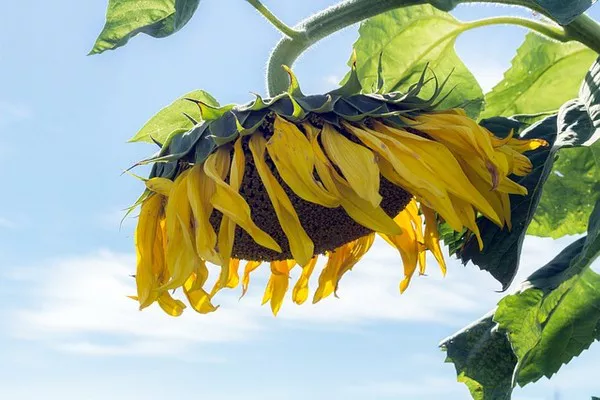Sunflowers, with their vibrant colors and imposing stature, have long captivated the admiration of gardeners and nature enthusiasts alike. As one of the most iconic and versatile plants, growing sunflowers can be a rewarding experience for both beginners and experienced gardeners. In this comprehensive guide, we will explore the step-by-step process of planting sunflower seeds, providing insights into the best practices that ensure successful growth and a bountiful harvest.
1. Selecting the Right Sunflower Seeds
Before embarking on your sunflower planting journey, it is crucial to select the right seeds. There are various sunflower varieties available, each differing in size, color, and growth habits. Determining your purpose for planting sunflowers will help you make the appropriate selection. Are you aiming for tall sunflowers to create a visual impact in your garden, or are you interested in smaller varieties for cut flowers? Take note of the seed package’s information, including the average height and bloom time, to make an informed choice.
2. Choosing the Ideal Location
Sunflowers thrive in sunny locations, as the name suggests. Ensure your chosen spot receives at least six to eight hours of direct sunlight daily. Additionally, sunflowers prefer well-draining soil with a pH level between 6.0 and 7.5. Prepare the soil by removing weeds, rocks, and debris. If your soil lacks nutrients, consider incorporating compost or organic matter to enhance its fertility.
3. Timing Matters
Timing plays a crucial role in sunflower growth. Sunflowers are warm-season plants, and they will not survive in frosty conditions. Wait until all threats of frost have passed before planting your sunflower seeds. Depending on your climate zone, this could be in early spring or late spring.
4. Planting Sunflower Seeds
a) Direct Sowing:
One of the simplest methods of planting sunflower seeds is direct sowing. Make sure the soil is warm enough, as sunflower seeds germinate best when the soil temperature is around 55 to 70°F (13-21°C). Dig a hole about 1 to 2 inches deep and place one to three seeds in each hole, then cover them with soil.
b) Transplanting Seedlings:
Alternatively, you can start sunflower seeds indoors in biodegradable pots a few weeks before the last expected frost. Transplant the seedlings once they have developed their first set of true leaves. This approach gives you a head start and can help protect young seedlings from pests.
5. Watering Sunflowers
Proper watering is essential for sunflower growth. In the early stages, when the seedlings are establishing their root systems, keep the soil consistently moist but not waterlogged. Once the plants have matured and developed deep roots, they can tolerate dry spells better. However, during hot summer months, it’s crucial to provide regular watering to prevent drought stress.
6. Fertilizing Sunflowers
Sunflowers are relatively low-maintenance plants, but they still benefit from proper nutrition. Before planting, you can incorporate a balanced fertilizer into the soil. Additionally, a side dressing of fertilizer can be applied once the plants have reached a height of about 12 inches. Avoid over-fertilizing, as this can lead to excessive foliage growth at the expense of flower development.
7. Providing Support
Tall sunflower varieties, especially those exceeding 4 feet in height, may require support to prevent them from bending or breaking under their weight. Staking the plants with bamboo poles or installing a trellis can help keep them upright, especially during windy conditions.
8. Managing Pests and Diseases
While sunflowers are relatively resilient, they are not immune to pests and diseases. Keep an eye out for common pests like aphids, slugs, and snails. If infestations occur, try to address them using organic pest control methods to avoid harmful chemicals. In terms of diseases, fungal issues can arise, particularly in humid conditions. Adequate spacing between plants, good air circulation, and avoiding overhead watering can help mitigate these problems.
9. Harvesting Sunflower Seeds
Once your sunflowers have bloomed and the flowers have started to wither, it’s time to harvest the seeds. The sunflower seeds are ripe when the flower heads turn downward, and the backs of the flower heads become brown or yellow. To harvest the seeds, cut the flower heads with about 6 inches of stem attached. Hang the flower heads upside down in a dry, well-ventilated area to complete the drying process. Once the seeds are fully dry, rub them off the flower head and store them in a cool, dry place.
Conclusion
Planting sunflower seeds can be an immensely gratifying experience, allowing you to witness nature’s beauty unfold right in your backyard. By selecting the right seeds, providing suitable growing conditions, and implementing proper care, you can enjoy the spectacle of sunflowers reaching for the sky and brightening up your garden with their golden blooms. Remember, each step of the journey contributes to the overall success of your sunflower growing endeavor, making it a truly rewarding and fulfilling gardening pursuit. Happy planting!


